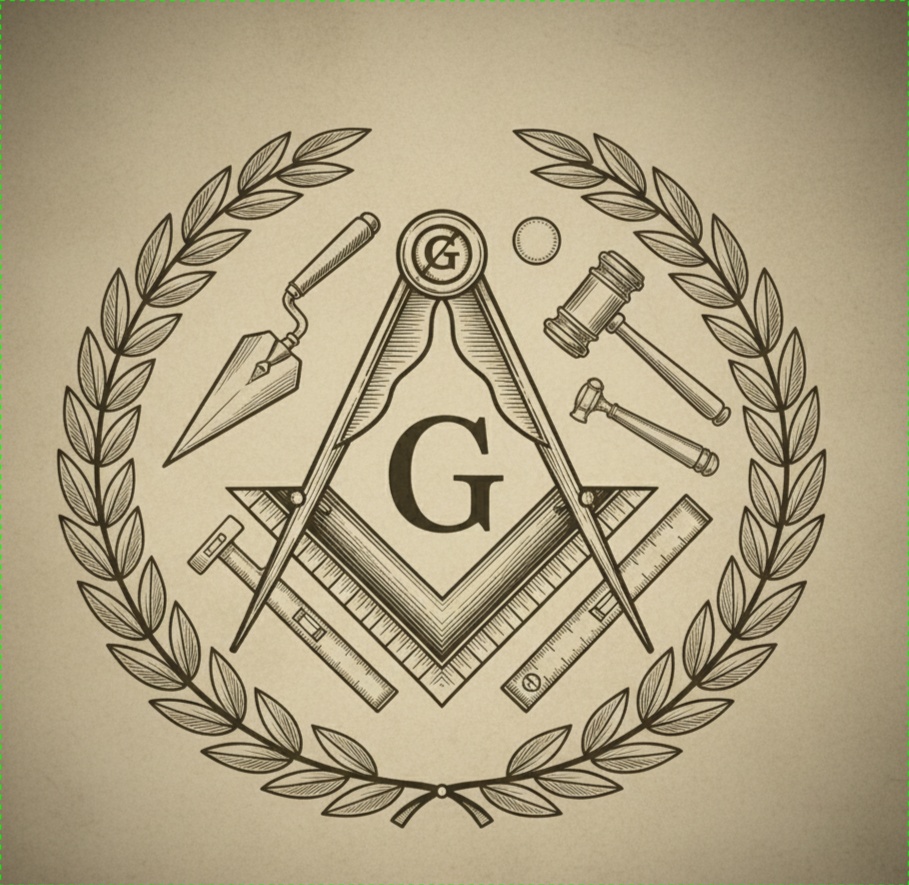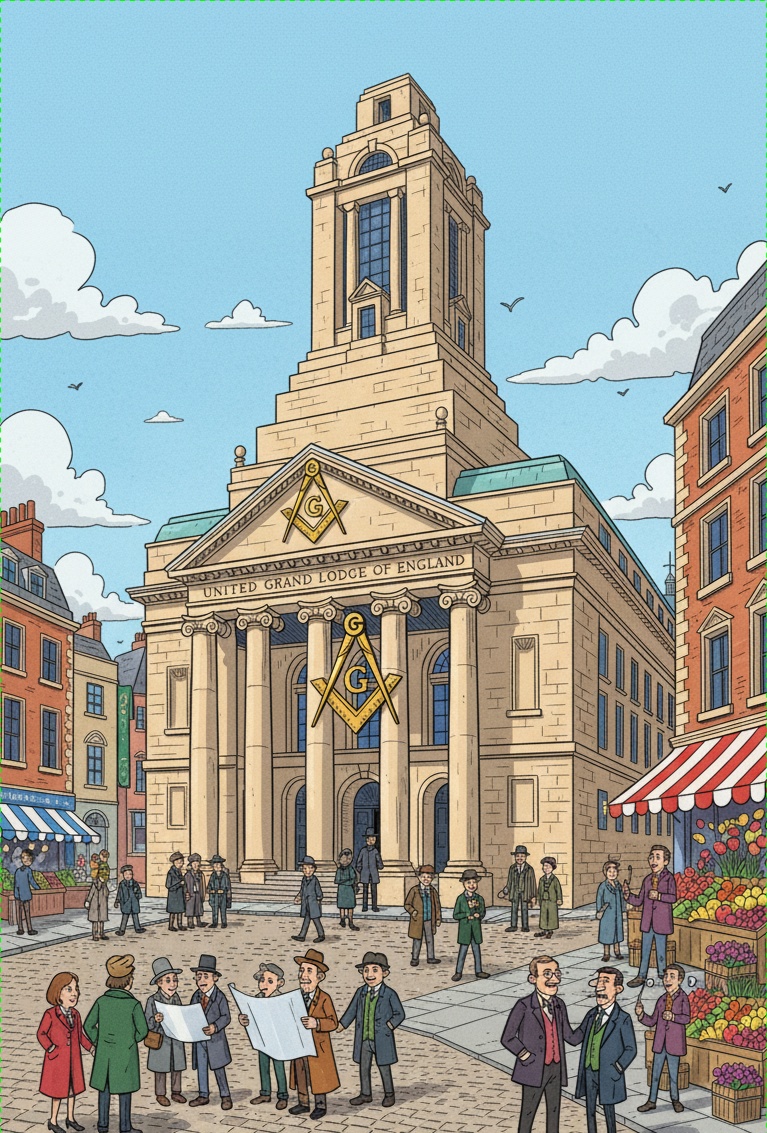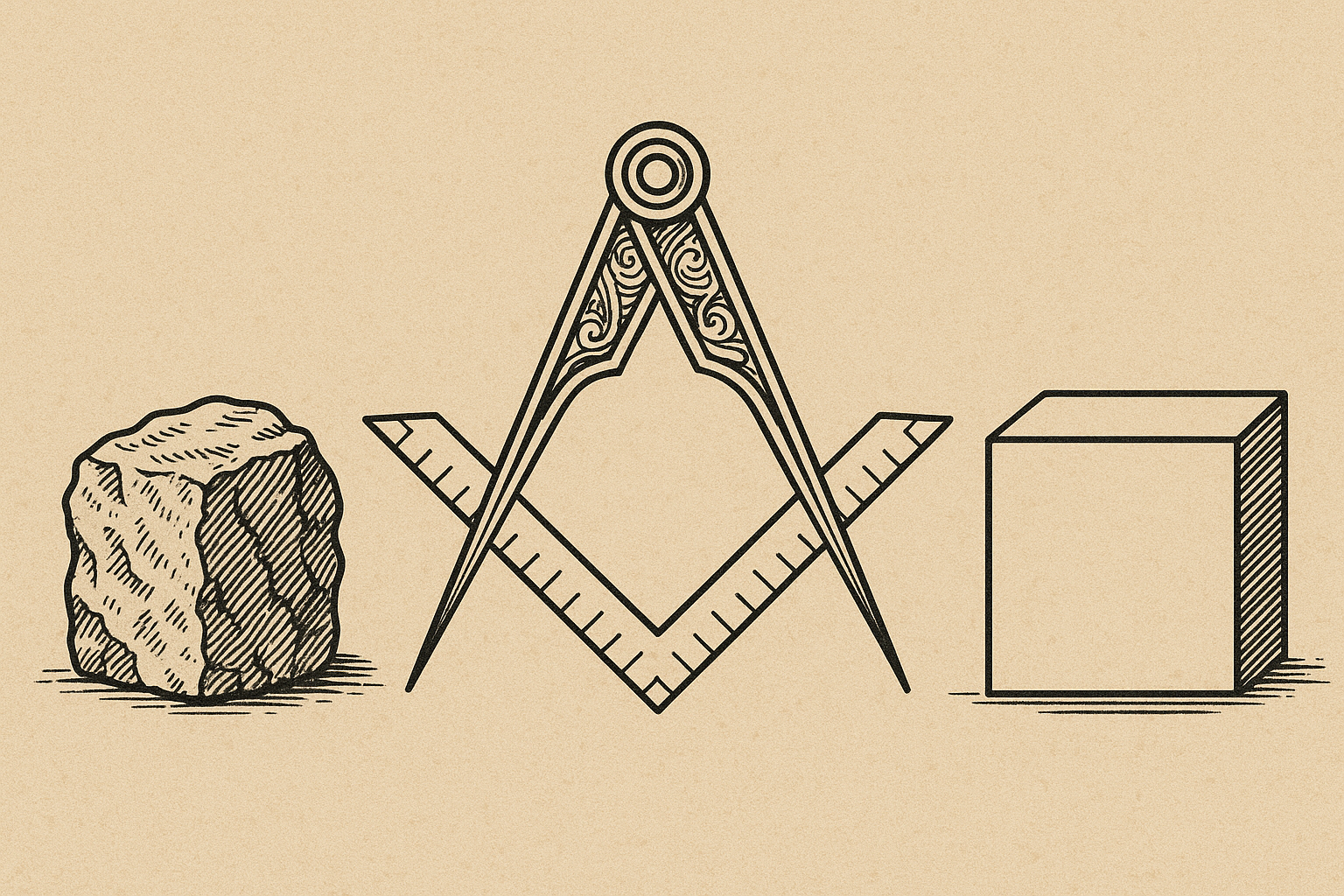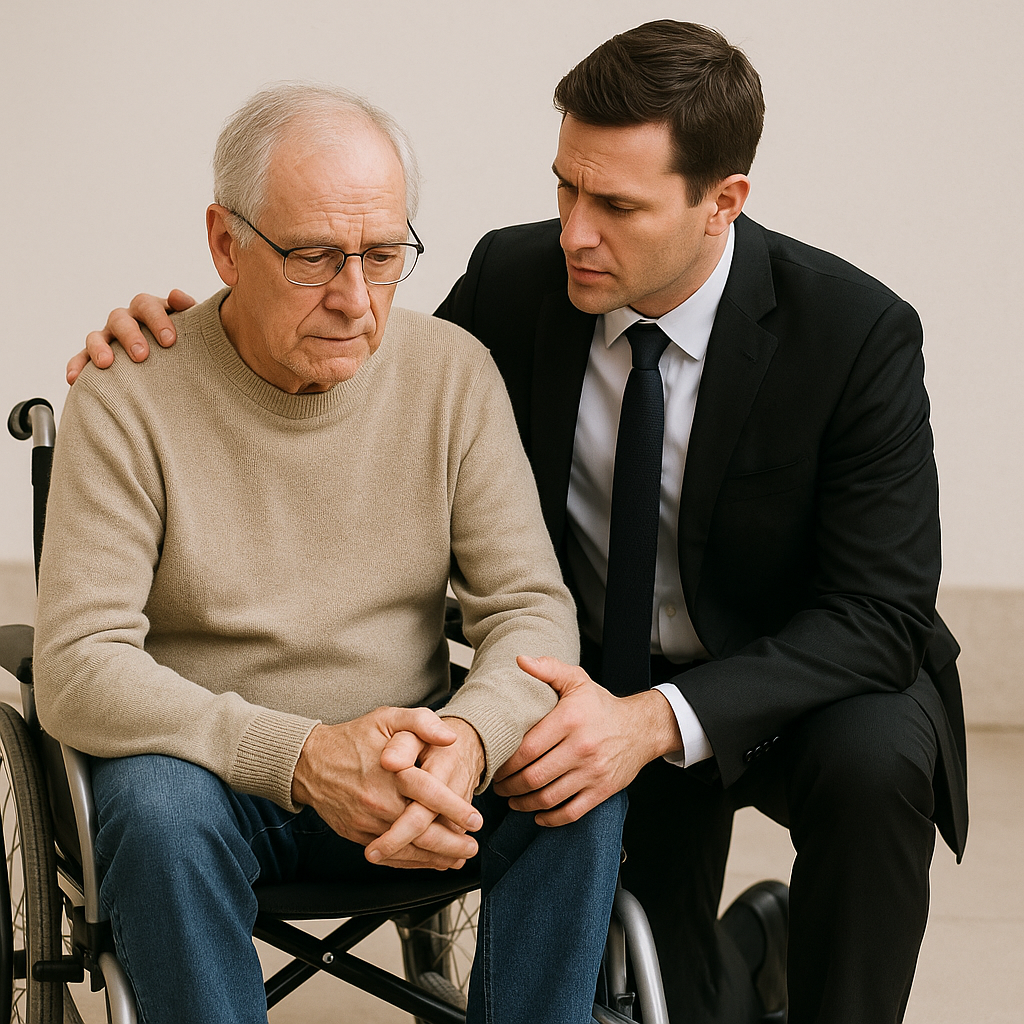Freemasonry Explained: Origins, Symbols, and the Hidden Philosophy Behind the Craft
What Is Freemasonry?
Freemasonry is described as "a beatiful system of morality, veiled in allegory, and symbols.” It is not a religion, not a secret society in the sinister sense, but rather a moral-philosophical fraternity devoted to self-improvement, brotherhood, and enlightenment. Using the tools of the medieval stonemason—compass, square, level, plumb, and trowel—it transforms the craft of building into a metaphor for the moral construction of the self.

From Operative Guilds to Speculative Brotherhoods
Freemasonry traces its roots to the operative stone guilds of medieval Europe. Early “Old Charges,” dating back to the 14th–16th centuries, outlined the rules and moral codes of masons who built cathedrals and castles. The Edinburgh Lodge records of 1598 already hint at non-operative or “speculative” members being admitted—educated gentlemen drawn by the symbolism rather than the craft.

On 24 June 1717, four London lodges gathered at the Goose and Gridiron Tavern to form the Grand Lodge of London and Westminster—the first modern Masonic governing body. This event is considered the official birth of organized Freemasonry. In 1723, Reverend James Anderson published The Constitutions of the Free-Masons, blending Enlightenment ideals with the old charges.
By the mid-18th century, Freemasonry had spread across Europe and the American colonies. Lodges became forums for intellectual exchange, hosting philosophers, scientists, and revolutionaries. In France alone, historians estimate between 50,000 and 100,000 Freemasons by 1789—many active in revolutionary and humanist circles.
Conflict and Persecution
The Catholic Church condemned Freemasonry as early as 1738, when Pope Clement XII issued In eminenti apostolatus. Over the centuries, more than twenty Papal decrees reaffirmed this stance, labeling membership a grave sin. In the 20th century, totalitarian regimes—Hitler, Mussolini, Franco, and Stalin—banned the Craft and persecuted its members. The French Masonic archives seized by the Gestapo in 1940 stand as a chilling reminder of those dark years.
Structure and Organization
The foundation of Freemasonry is the Lodge, where candidates advance through three symbolic degrees:
- Entered Apprentice,
- Fellowcraft,
- Master Mason
Each degree conveys ethical lessons through ritual drama.

Every jurisdiction has its own Grand Lodge, sovereign and independent. The United Grand Lodge of England (UGLE) is considered the “Mother Grand Lodge.” Recognition between Grand Lodges depends on adherence to the Landmarks of Masonry, such as belief in a Supreme Being and the presence of a Volume of Sacred Law
Beyond the first three degrees lie appendant orders and rites—Scottish Rite, York Rite, Royal Arch, and Mark Masonry—that expand on philosophical and historical themes.
Freemasonry With Numbers
UGLE counts about 170,000 members in 7,000 lodges; U.S. membership peaked at 4.05 million in 1956 and dropped to 870,000 by 2023; the Grand Orient de France has around 56,000 members, and the Grande Loge de France about 33,000. Global estimates range between 3 and 6 million.
Symbols and Philosophy: The Inner Architecture
Freemasonry is an allegory of self-transformation.
Tools and symbols carry moral meaning: the Rough Ashlar becomes the Perfect Ashlar; the Square and Compass represent integrity and discipline; the Level and Plumb equality and uprightness; “Light” symbolizes truth and knowledge.

The Lodge symbolizes the Temple of Humanity—built not of stone but of virtue. The Mason’s duty is to build his inner temple, stone by stone, through knowledge, service, and reflection.
Ritual, Charity, and Public Image
Masonic meetings are private but not secret; ritual language and symbolism preserve continuity. Freemasonry is also one of the largest non-religious charitable networks.

The Masonic Charitable Foundation in England donates millions annually to healthcare, education, and relief causes.
Myths and Misunderstandings
Freemasonry’s discretion has often been mistaken for conspiracy. Its “secrets” are moral allegories and forms of recognition, not hidden agendas. Scholars describe Masonry as a network of Enlightenment-era civic communication rather than a shadow government.
